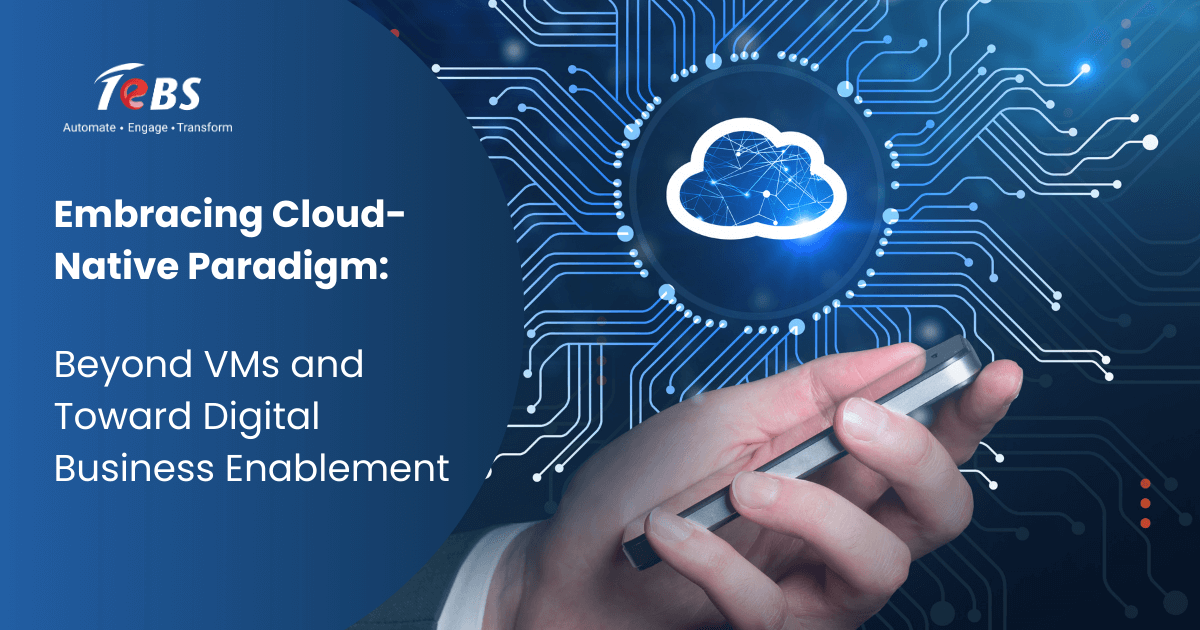Introduction
The advent of cloud computing has brought about a revolutionary transformation in the way businesses operate, innovate, and scale. While the initial journey into the cloud often revolved around virtual machines (VMs) and lift-and-shift approaches, the true essence of the cloud lies in embracing cloud-native services and architectures. This paradigm shift not only ensures optimal utilization of the cloud’s capabilities but also empowers businesses to unlock their full potential and drive digital transformation. In this blog, we’ll delve into why the cloud is not merely about VMs or lift and shift, but rather a gateway to re-architecting applications and propelling digital businesses forward.
Beyond VMs: Unleashing Cloud-Native Services
Virtual machines, with their ability to replicate on-premises environments in the cloud, were initially hailed as a game-changer. However, this approach often resulted in underutilization of cloud resources, missed opportunities for scalability, and limited cost savings. The cloud-native approach, on the other hand, centers around leveraging a range of purpose-built, managed services provided by cloud providers.
Cloud-native services, such as serverless computing, managed databases, container orchestration (e.g., Kubernetes), and AI/ML services, are designed to cater to specific business needs without the complexities of managing underlying infrastructure. This allows businesses to focus more on building and optimizing applications and less on managing infrastructure, leading to faster innovation cycles and higher agility.
Re-Architecting Applications: The Cloud-Native Mindset
Re-architecting applications for the cloud involves breaking down monolithic applications into smaller, loosely coupled microservices. These microservices can be independently developed, deployed, and scaled, enabling quicker updates and reducing downtime. Containers play a pivotal role in this process, as they encapsulate each microservice along with its dependencies, making deployment consistent across various environments.
The shift to microservices and containers goes hand in hand with DevOps practices, promoting collaboration between development and operations teams. Continuous integration and continuous deployment (CI/CD) pipelines become integral, ensuring that code changes are automatically tested, integrated, and deployed, further speeding up the development lifecycle.
Enabling Digital Businesses: The Paradigm Shift
The move towards cloud-native architectures is not merely a technical shift; it’s a strategic move towards enabling digital businesses. Cloud-native applications are designed to be highly available, resilient, and scalable, providing the foundation for seamless user experiences. Whether it’s accommodating fluctuating user demands or rapidly adapting to market changes, cloud-native services empower businesses to stay ahead in today’s fast-paced digital landscape.
Moreover, cloud-native applications lend themselves well to emerging technologies like IoT, AI, and edge computing. These technologies thrive on agility and real-time capabilities, both of which are inherent to cloud-native architectures. By adopting these technologies, businesses can create innovative products, services, and business models that were previously unthinkable.
Conclusion
In conclusion, the cloud is not merely a repository for virtual machines or a platform for lift-and-shift migrations. Its true potential lies in embracing cloud-native services and re-architecting applications to fully leverage its capabilities. This paradigm shift is not just about technology—it’s about enabling digital businesses to thrive, innovate, and lead in a rapidly evolving market landscape. As organizations continue their journey to the cloud, understanding and embracing the cloud-native mindset will be the driving force behind their success.
At TeBS , we simplify our customers journey r to the cloud ecosystem by assisting with everything from strategy to process design. By creating cloud-native apps, our cloud solution experts you in transitioning to a cloud-first approach.Drop us a mail at [email protected] to know more about our cloud services .





